Drive the Powder Highway
Scenario: Big Winter in B.C.
This past November was one of the snowiest on record in British Columbia. Which means that even if the storms slow down, there’s still going to be truckloads of snow this March especially in the Kootenay region, a damp swath of mountains in the southeastern part of the province. So book a ticket to Cranbrook Delta now flies direct from Salt Lake City and spin along the Powder Highway, a 660-mile “loop” with more than 50 resorts and backcountry-, cat-, and heli-skiing operations. My buddy Luke and I sampled the goods a few years ago. We started at Whitewater Resort (), a three-lift mountain outside of Nelson that receives more than 40 feet of snow annually. Then we spent a few days in Fernie (), an unsung destination with some of the best tree skiing I’ve seen, before looping back to Red Mountain (), an empty, cliff-strewn resort. Our conclusion: The route honors its good name, and we’ve been plotting our return ever since. Especially considering the 2007 addition of Revelstoke Mountain Resort (), with more than 5,600 feet of vert, the most on the continent. This I gotta see.
: Surf Kona
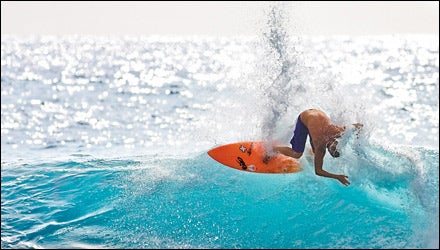
Scenario: El Niño Boils the Pacific
Spring on the Kailua-Kona side of Hawaii’s Big Island usually brings thick humidity and low surf. But in El Niño years, trade winds are often pushed south, leaving light breezes and clear skies: ideal beach weather. Plus low-pressure systems generate stronger storms out at sea, sending in swells that line up with the Big Island’s reefs. Fly into the Kailua-Kona airport and check into the Kona Sugar Shack (from $150; ). Then rent a board from Pacific Vibrations (from $15 per day; 808-329-4140) and hook up with Kona-based pro surfer C.J. Kanuha for a private lesson (from $140; ). Beginners: Request Pine Trees, a gentle break four miles north of town. More experienced? On a northwest swell, Lyman’s point breakoff Kona’s main road, Alii Driveis best for longboarding. And if El Niño doesn’t deliver? Just head to the end of Alii Drive, to End of the World, a 30-foot lava-rock cliff and your spot for a dive into the Pacific.
What Says El Niño?
The phenomenon known as El Niño is, to oversimplify a bit, the Pacific Ocean regulating her body temperature. This happens in intervals of between two and five years, and the effect is a warming of surface waters in the eastern Pacific. This shifts the jet streamand its corresponding storm tracksouth, leading to an upheaval in typical U.S. weather patterns, especially in the Southeast, Northwest, and California. Many meteorologists are predicting a moderate-to-strong effect through May. What’s that mean for you? Probably a warm, wet spring in Southern California and drier conditions in the Northwest. (The record-breaking November snowfall in Whistler, British Columbia, was an El Niño anomaly and a strict reminder that predicting the weather is pure folly.) Odds are the late-season powder gods will smile upon the Sierra and, if temps stay cold, the southern Rockies. But the biggest upside? Potentially awesome surf in Southern California and Hawaii, which already saw huge swells in December.
: Vegas, Baby
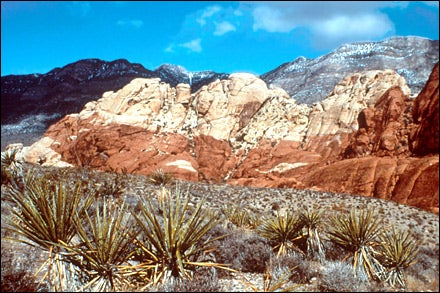
Scenario: The Economy’s Still in the Tank
The best part about Vegas is not the endless nights and tantalizing, if long, odds. It’s the fact that there may be no easier destination for scoring last-minute deals on flights and hotel rooms (), which means easy access to nearby Red Rock Canyon National Conservation Area. A 195,000-acre puzzle of sandstone canyons and one of the country’s top climbing destinations, Red Rocks is home to more than 2,000 routeseverything from short sport climbs to big walls (entrance fee, $5; climbing permits free; 702-515-5350). The northeast face of Mount Wilson offers tough, fun multipitch climbs, and spring is the time to tackle it (not too hot, not too cold). Book a day trip with Jackson Hole Mountain Guides ($235; ), the same outfit that leads clients up the Grand Teton. They’ll belay you on a four-pitch climb designed for your skill level. When you’re done, it’s only 20 minutes back to the Strip, where you can try to win back the cost of your trip.
: Float the Illinois
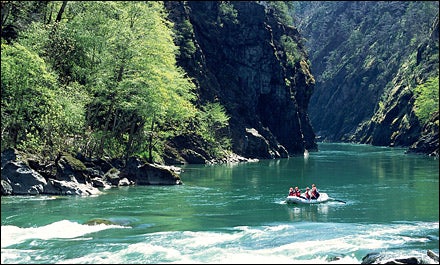
Scenario: Sun Spell in the Northwest
Whitewater rafting in March? Yup, if it’s on southwestern Oregon’s Wild and Scenic Illinois River, a Class IVV beauty that happens to be my favorite stretch of water in the Northwest. The key is catching the perfect flow. In March, that means a Pacific storm bringing three days of rain to raise the water level, followed by a splash of sun. Ashland-based Momentum River Expeditions knows when the Illinois is best. Call a month in advance and tell them you’re flexible with your schedule so they have time to adjust for weather. Ask for their four-day wine-and-cheese float ($850; ), which puts in two hours northwest of Ashland at Miami Bar and takes out 34 miles later at the confluence of the Illinois and the Rogue. Momentum will pack local syrah to complement Rogue Creamery cheeses. That’s the pampering you’ll want between picking your way through more than 80 rapids and one wild eight-foot waterfall.
: Ride Napa
St. Helena, Napa Valley
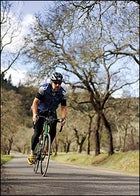 St. Helena, Napa Valley
St. Helena, Napa Valley
Scenario: Early Spring
Winter means rain in the Bay Area. But even in El Niño years, spring arrives early. And what an arrival it isespecially in Napa, the place to go for a spring break featuring green hillsides, rolling roads, fine libations, and no cheap tequila. Start in Yountville and stay at Bardessono (doubles from $300; ), a new, stylish hotel with easy access to the area’s vineyards. Then set out for a gentle 14-mile ride (daylong rentals, $35 at Napa Valley Bike Tours; ) through the Stags Leap district, home of Malk and Pine Ridge, makers of wine country’s best cabernet sauvignon. Next up is Mount Veeder, a 36-mile loop that climbs 1,500 feet to valleywide vistas. Recovery: After soaking in Bardessono’s spa, walk to any of the multiple celeb-chef-run restaurants nearby. Try Thomas Keller’s Ad Hoc for succulent fried chicken ().
: Hike Arches
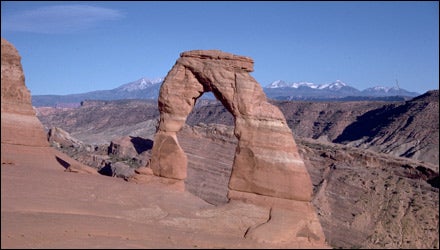
Scenario: PBS Keeps Airing Ken Burns’s The National Parks
Due to its proximity to Moab, Arches National Park has seen a steady increase in visitation since the eighties. This year, expect a deluge thanks to Burns’s documentary. But the park is most heavily trafficked in May, meaning an early spring trip gets you uncrowded access to the 2,500-odd archways. At this time of year, Arches sees everything from temps in the seventies to light snow. But south-facing walls soak up enough sun to keep climbers comfortable in all conditions. Outfitters don’t guide in the park, so rent gear in town at Pagan Mountaineering (435-259-1117) and shimmy up Owl Rock, an easy 5.8 trad route (stay on the park’s main road past the visitor center and turn right by Balance Rock). Hikers: You’ll find the most arches on the 7.2-mile Devil’s Garden loop. Camp at one of Sand Flats Recreation Area’s 120 sites, located on a high-desert plateau with views of the 11,500-foot La Sal Mountains ($10 per night; 435-259-2444).





